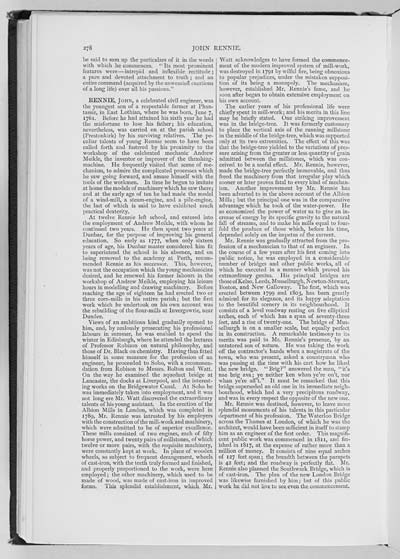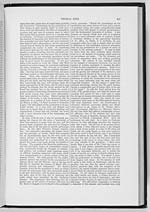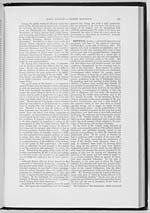278
be said to sum up the particulars of it in the words
with which he commences. "Its most prominent
features were�intrepid and inflexible rectitude;
a pure and devoted attachment to truth; and an
entire command (acquired by the unwearied exertions
of a long life) over all his passions."
RENNIE, JOHN, a celebrated civil engineer, was
the youngest son of a respectable farmer at Phan-
tassie, in East Lothian, where he was born, June 7,
1761. Before he had attained his sixth year he had
the misfortune to lose his father; his education,
nevertheless, was carried on at the parish school
(Prestonkirk) by his surviving relatives. The pe-
culiar talents of young Rennie seem to have been
called forth and fostered by his proximity to the
workshop of the celebrated mechanic Andrew
Meikle, the inventor or improver of the thrashing-
machine. He frequently visited that scene of me-
chanism, to admire the complicated processes which
he saw going forward, and amuse himself with the
tools of the workmen. In time he began to imitate
at home the models of machinery which he saw there;
and at the early age of ten he had made the model
of a wind-mill, a steam-engine, and a pile-engine,
the last of which is said to have exhibited much
practical dexterity.
At twelve Rennie left school, and entered into
the employment of Andrew Meikle, with whom he
continued two years. He then spent two years at
Dunbar, for the purpose of improving his general
education. So early as 1777, when only sixteen
years of age, his Dunbar master considered him fit
to superintend the school in his absence, and on
being removed to the academy at Perth, recom-
mended Rennie as his successor. This, however,
was not the occupation which the young mechanician
desired, and he renewed his former labours in the
workshop of Andrew Meikle, employing his leisure
hours in modelling and drawing machinery. Before
reaching the age of eighteen he had erected two or
three corn-mills in his native parish; but the first
work which he undertook on his own account was
the rebuilding of the flour-mills at Invergowrie, near
Dundee.
Views of an ambitious kind gradually opened to
him, and, by zealously prosecuting his professional
labours in summer, he was enabled to spend the
winter in Edinburgh, where he attended the lectures
of Professor Robison on natural philosophy, and
those of Dr. Black on chemistry. Having thus fitted
himself in some measure for the profession of an
engineer, he proceeded to Soho, with a recommen-
dation from Robison to Messrs. Bolton and Watt.
On the way he examined the aqueduct bridge at
Lancaster, the docks at Liverpool, and the interest-
ing works on the Bridgewater Canal. At Soho he
was immediately taken into employment, and it was
not long ere Mr. Watt discovered the extraordinary
talents of his young assistant. In the erection of the
Albion Mills in London, which was completed in
1789, Mr. Rennie was intrusted by his employers
with the construction of the mill-work and machinery,
which were admitted to be of superior excellence.
These mills consisted of two engines, each of fifty
horse power, and twenty pairs of millstones, of which
twelve or more pairs, with the requisite machinery,
were constantly kept at work. In place of wooden
wheels, so subject to frequent derangement, wheels
of cast-iron, with the teeth truly formed and finished,
and properly proportioned to the work, were here
employed; the other machinery, which used to be
made of wood, was made of cast-iron in improved
forms. This splendid establishment, which Mr.
Watt acknowledges to have formed the commence-
ment of the modern improved system of mill-work,
was destroyed in 1791 by wilful fire, being obnoxious
to popular prejudices, under the mistaken supposi-
tion of its being a monopoly. The mechanism,
however, established Mr. Rennie's fame, and he
soon after began to obtain extensive employment on
his own account.
The earlier years of his professional life were
chiefly spent in mill-work; and his merits in this line
may be briefly stated. One striking improvement
was in the bridge-tree. It was formerly customary
to place the vertical axis of the running millstone
in the middle of the bridge-tree, which was supported
only at its two extremities. The effect of this was
that the bridge-tree yielded to the variations of pres-
sure arising from the greater or less quantity of grain
admitted between the millstones, which was con-
ceived to be a useful effect. Mr. Rennie, however,
made the bridge-tree perfectly immovable, and thus
freed the machinery from that irregular play which
sooner or later proves fatal to every kind of mechan-
ism. Another improvement by Mr. Rennie has
been adverted to in the above account of the Albion
Mills; but the principal one was in the comparative
advantage which he took of the water-power. He
so economized the power of water as to give an in-
crease of energy by its specific gravity to the natural
fall of streams, and to make his mills equal to four-
fold the produce of those which, before his time,
depended solely on the impetus of the current.
Mr. Rennie was gradually attracted from the pro-
fession of a mechanician to that of an engineer. In
the course of a few years after his first coming into
public notice, he was employed in a considerable
number of bridges and other public works, all of
which he executed in a manner which proved his
extraordinary genius. His principal bridges are
those of Kelso, Leeds, Musselburgh, Newton-Stewart,
Boston, and New Galloway. The first, which was
erected between 1799 and 1803, has been greatly
admired for its elegance, and its happy adaptation
to the beautiful scenery in its neighbourhood. It
consists of a level roadway resting on five elliptical
arches, each of which has a span of seventy-three
feet, and a rise of twenty-one. The bridge of Mus-
selburgh is on a smaller scale, but equally perfect
in its construction. A remarkable testimony to its
merits was paid in Mr. Rennie's presence, by an
untutored son of nature. He was taking the work
off the contractor's hands when a magistrate of the
town, who was present, asked a countryman who
was passing at the time with his cart how he liked
the new bridge, "Brig?" answered the man, "it's
nae brig ava; ye neither ken whan ye're on't, nor
whan ye're aff't." It must be remarked that this
bridge superseded an old one in its immediate neigh-
bourhood, which had a very precipitous roadway,
and was in every respect the opposite of the new one.
Mr. Rennie was destined, however, to leave more
splendid monuments of his talents in this particular
department of his profession. The Waterloo Bridge
across the Thames at London, of which he was the
architect, would have been sufficient in itself to stamp
him as an engineer of the first order. This magnifi-
cent public work was commenced in 1811, and fin-
ished in 1817, at the expense of rather more than a
million of money. It consists of nine equal arches
of 127 feet span; the breadth between the parapets
is 42 feet; and the roadway is perfectly flat. Mr.
Rennie also planned the Southwark Bridge, which is
of cast-iron. The plan of the new London Bridge
was likewise furnished by him; but of this public
work he did not live to see even the commencement.

![]() Universal Viewer |
Universal Viewer | ![]() Mirador |
Large image | Transcription
Mirador |
Large image | Transcription
![]()

